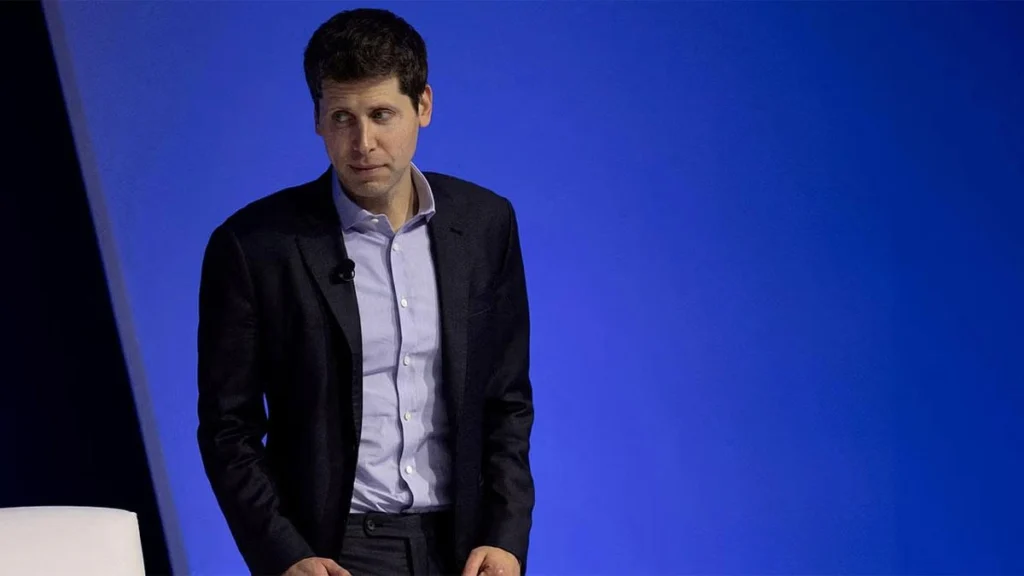A New Era for Creativity: Sam Altman Proposes Revenue-Sharing Model to Empower Artists in the Age of AI
At TED 2025, OpenAI CEO Sam Altman ignited a revolutionary discussion regarding the future of creativity and artificial intelligence. During an open interview on April 11, Altman proposed the concept of a revenue-sharing scheme where artists and creators could choose to have their work utilized to train AI systems—with payment. “I would love to see how you could solve for a new model where if you say ‘I want to do it in the name of this artist’ and they [the artist] agree, there’s a revenue model there,” Altman said. This idea, from one of AI’s most powerful leaders, has the potential to transform how the tech industry thinks about intellectual property, responsible AI development, and the value of human creativity.

The Proposal: Bridging AI Innovation and Artistic Rights
Altman’s dream relies on a straightforward yet revolutionary idea: consent and compensation. With this model, artists—be they musicians, authors, painters, or film-makers—can opt to license their work for use in AI training datasets. They would then be paid a portion of the revenues derived from AI products based on their contributions. So, for example, if a song generated by AI imitates “in the style of” a particular artist becomes a viral hit, that artist gets paid royalti es in proportion to their stature.
This model is a far cry from today’s practices, in which AI firms tend to scrape publicly available information without consent, resulting in lawsuits and public outcry. Altman’s model prioritizes collaboration over exploitation, with AI framed not as a danger to creativity but as a force that extends human talent.
Why Now? The Rising Tensions Between AI and Creativity
The urgency of Altman’s proposal is underscored by escalating conflicts between tech firms and creators:
- Getty Images sued Stability AI in 2023 for using millions of its photos to train Stable Diffusion without licensing.
- Musicians like Grimes and Drake have clashed over AI-generated tracks mimicking their voices.
- Authors including George R.R. Martin and Sarah Silverman are pursuing class-action lawsuits against OpenAI for training ChatGPT on their books.
These examples point to a glaring void: current copyright law was not written for the age of AI. As Altman pointed out, the current state of affairs is unsustainable. “We need systems that respect creators while enabling progress,” he made the case at TED. A revenue-sharing system might provide a middle ground, turning adversarial relationships into partnerships.
How It Might Work: Mechanics of the Revenue-Sharing Model
While details remain speculative, experts suggest several potential mechanisms:
- Opt-In Platforms: A registry where artists upload their work and set terms (e.g., “10% of revenue from derivative AI content”).
- Micro-Royalties: Blockchain or smart contracts could track usage and automate payouts, similar to Spotify’s streaming model but more granular.
- Tiered Licensing: Premium access for AI firms willing to pay higher rates for high-demand content.
- Transparency Tools: Auditable systems showing how specific artists’ work influenced AI outputs.
For example, a graphic designer could license their portfolio to an AI art generator. Each time the tool produces work inspired by their style, the designer earns a fee. This not only compensates creators but also gives users ethical assurance—a win-win for trust and innovation.
Benefits: Empowering Creators and Elevating AI
Altman’s model promises transformative advantages:
For Artists:
- Sustainable Income: Royalties from AI could supplement traditional revenue streams, especially for independent creators.
- Control: Opt-in models let artists decide how their work is used, preserving autonomy.
- Global Reach: AI platforms could expose creators to new audiences, akin to social media but with monetization baked in.
For AI Companies:
- Legal Security: Licensed data reduces litigation risks.
- Richer Datasets: Willing contributors might offer higher-quality, niche content.
- Ethical Branding: Companies adopting this model could position themselves as industry leaders in responsible AI.
Adobe’s Firefly, which trains its AI exclusively on licensed stock images, offers a precedent. Its success shows that ethical data practices can coexist with commercial viability.
Challenges: Roadblocks to Fair Compensation
Despite its promise, the revenue-sharing model faces significant hurdles:
- Tracking Usage: How do you quantify an artist’s influence on an AI model trained on millions of works?
- Valuation: What’s a “fair” share? A hit song’s royalties are clearer than nebulous AI contributions.
- Global Enforcement: Differing copyright laws across countries complicate compliance.
- Corporate Resistance: Tech giants may balk at profit-sharing, fearing reduced margins.
Critics also warn of “tokenism”—tiny payouts that placate artists without addressing systemic inequities. “Without regulation, this could just be PR,” warns Dr. Emily Rogers, a digital ethics scholar.
The Bigger Picture: Redefining Creativity’s Value in the AI Age
Altman’s vision isn’t merely about capital—it’s recognition. Formalizing creators’ ownership in AI innovations, the model recognizes that human creativity is what underpins machine learning. And it unlocks avenues to hybrid creativty: picture writers working alongside AI writing software, AI trained on authors’ previous efforts, authors deriving royalties from books sold as well as from licenses for software applications.
This transition may democratize creativity, allowing marginalized voices to be empowered. Indigenous artists, for example, may license culturally important patterns to AI platforms while protecting their heritage.
Toward a Collaborative Future
Sam Altman’s proposal for revenue sharing is a call to action, urging the tech and creative communities to innovate responsibly. Though implementation questions remain, the underlying principle is evident: AI must enhance human creativity, not plunder it. As copyright and ethics debates rage on, one thing is certain—the future of AI hinges on collaboration, not pillage.
To make this vision a reality, policymakers, technology leaders, and creators need to work together on systems that balance innovation with integrity. As Altman succinctly put it, “Getting this right isn’t just cool—it’s critical.”
Click Here to subscribe to our newsletters and get the latest updates directly to your inbox.

